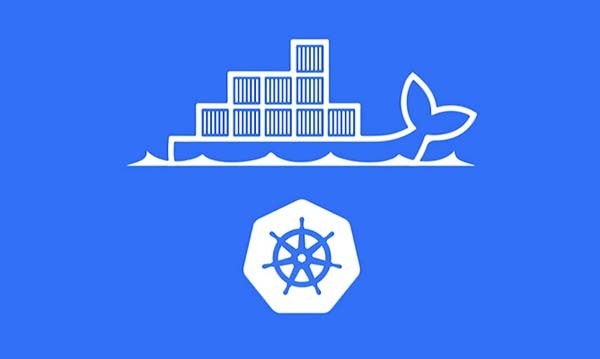node 节点选择器
我们在创建 pod 资源的时候,pod 会根据 schduler 进行调度,那么默认会调度到随机的一个工作节点,如果我们想要 pod 调度到指定节点或者调度到一些具有相同特点的 node 节点,怎么办呢? 可以使用 pod 中的 nodeName 或者 nodeSelector 字段指定要调度到的 node 节点
1、nodeName
指定 pod 节点运行在哪个具体 node 上,不经过调度器,不受 Taint 的限制。
#node1和2用docker下载tomcat busybox
[root@k8smaster node]# vim pod-node.yml apiVersion: v1 kind: Pod metadata: name: demo-pod namespace: default labels: app: myapp env: dev spec: nodeName: k8snode containers: - name: tomcat-pod-java ports: - containerPort: 8080 image: tomcat imagePullPolicy: IfNotPresent - name: busybox image: busybox:latest command: - "/bin/sh" - "-c" - "sleep 3600" [root@k8smaster node]# kubectl apply -f pod-node.yml pod/demo-pod created
#查看 pod 调度到哪个节点 [root@k8smaster node]# kubectl get pods -o wide NAME READY STATUS RESTARTS AGE IP NODE NOMINATED NODE demo-pod 2/2 Running 0 35s 10.244.2.18 k8snode <none>
复制代码
2、nodeSelector
指定 pod 调度到具有哪些标签的 node 节点上
#给 node 节点打标签,打个具有 disk=ceph 的标签[root@k8smaster node]# kubectl describe nodes k8snode2 查看node属性[root@k8smaster node]# kubectl label nodes k8snode2 disk=cephnode/k8snode2 labeled#然后再查看去label哪里就能看到了
#定义 pod 的时候指定要调度到具有 disk=ceph 标签的 node 上 [root@k8smaster node]# vim pod-1.yaml apiVersion: v1 kind: Pod metadata: name: demo-pod-1 namespace: default labels: app: myapp env: dev spec: nodeSelector: disk: ceph containers: - name: tomcat-pod-java ports: - containerPort: 8080 image: tomcat imagePullPolicy: IfNotPresent [root@k8smaster node]# kubectl apply -f pod-1.yaml pod/demo-pod-1 created
#查看 pod 调度到哪个节点 [root@k8smaster node]# kubectl get pods -o wide NAME READY STATUS RESTARTS AGE IP NODE NOMINATED NODE demo-pod-1 1/1 Running 0 8s 10.244.1.19 k8snode2 <none> #如果标签和nodename都有的话 优先选择好的node。
复制代码
污点和污点容忍
污点容忍
污点容忍就是某个节点可能被调度,也可能不被调度
node 节点亲和性
node 节点亲和性调度:nodeAffinity 用帮助文档查看亲和性字段下面的东西
[root@k8smaster node]# kubectl explain pods.spec.affinity KIND: PodVERSION: v1
RESOURCE: affinity <Object>
DESCRIPTION: If specified, the pod's scheduling constraints
Affinity is a group of affinity scheduling rules.
FIELDS: nodeAffinity <Object> Describes node affinity scheduling rules for the pod.
podAffinity <Object> podAntiAffinity <Object>#有node节点亲和性 pode节点亲和性等,然后我们再详细的看看nodeAffinity 。 [root@k8smaster node]# kubectl explain pods.spec.affinity.nodeAffinity KIND: PodVERSION: v1
RESOURCE: nodeAffinity <Object>
DESCRIPTION: Describes node affinity scheduling rules for the pod.
Node affinity is a group of node affinity scheduling rules.
FIELDS: preferredDuringSchedulingIgnoredDuringExecution <[]Object>
requiredDuringSchedulingIgnoredDuringExecution <Object> #prefered 表示有节点尽量满足这个位置定义的亲和性,这不是一个必须的条件,软亲和性,没满足也可能调度。#require 表示必须有节点满足这个位置定义的亲和性,这是个硬性条件,硬亲和性,没满足不可能调度。
[root@k8smaster node]# kubectl explain pods.spec.affinity.nodeAffinity.requiredDuringSchedulingIgnoredDuringExecutionKIND: PodVERSION: v1
RESOURCE: requiredDuringSchedulingIgnoredDuringExecution <Object>
DESCRIPTION: If the affinity requirements specified by this field are not met at scheduling time, the pod will not be scheduled onto the node. If the affinity requirements specified by this field cease to be met at some point during pod execution (e.g. due to an update), the system may or may not try to eventually evict the pod from its node.
A node selector represents the union of the results of one or more label queries over a set of nodes; that is, it represents the OR of the selectors represented by the node selector terms.
FIELDS: nodeSelectorTerms <[]Object> -required- #必写字段,对象列表 [root@k8smaster node]# kubectl explain pods.spec.affinity.nodeAffinity.requiredDuringSchedulingIgnoredDuringExecution.nodeSelectorTermsKIND: PodVERSION: v1
RESOURCE: nodeSelectorTerms <[]Object>
DESCRIPTION: Required. A list of node selector terms. The terms are ORed.
A null or empty node selector term matches no objects. The requirements of them are ANDed. The TopologySelectorTerm type implements a subset of the NodeSelectorTerm.
FIELDS: matchExpressions <[]Object> #匹配表达式的 A list of node selector requirements by node's labels.
matchFields <[]Object> #匹配字段的 A list of node selector requirements by node's fields. [root@k8smaster node]# kubectl explain pods.spec.affinity.nodeAffinity.requiredDuringSchedulingIgnoredDuringExecution.nodeSelectorTerms.matchExpressionsKIND: PodVERSION: v1
RESOURCE: matchExpressions <[]Object>
DESCRIPTION: A list of node selector requirements by node's labels.
A node selector requirement is a selector that contains values, a key, and an operator that relates the key and values.
FIELDS: key <string> -required- #检查 label operator <string> -required- #做等值选则还是不等值选则
values <[]string> #给定的值 #在做node节点亲和性的时候,values是标签的值,他会通过op匹配相等的key或者不等的key。 例 1:使用 requiredDuringSchedulingIgnoredDuringExecution 硬亲和性 #node1 node2都拉nginx [root@k8smaster node]# vim pod-nodeaffinity-demo.yamlapiVersion: v1kind: Podmetadata: name: pod-node-affinity-demo namespace: default labels: app: myapp tier: frontendspec: containers: - name: myapp image: nginx affinity: nodeAffinity: requiredDuringSchedulingIgnoredDuringExecution: nodeSelectorTerms: - matchExpressions: - key: zone operator: In values: - foo - bar
复制代码
节点亲和性的功能在较低版本的 k8s 是不支持的。affinity:亲和性,下面的 node 是 node 亲和性,然后 requ 硬亲和性,nodeselect 是对象列表,我们用-链接,然后 match 也是对象列表,同上,key 是 zone,然后等值关系,值是 foo 和 bar。
Affinity 翻译成中文是“亲和性”,它对应的是 Anti-Affinity,可以翻译成“互斥”。这两个词比较形象,可以把 pod 选择 node 的过程类比成磁铁的吸引和互斥,不同的是除了简单的正负极之外,pod 和 node 的吸引和互斥是可以灵活配置的。
Affinity 的优点:
匹配有更多的逻辑组合,不只是字符串的完全相等调度分成软策略(soft)和硬策略(hard),在软策略下,如果没有满足调度条件的节点,pod 会忽略这条规则,继续完成调度。
这里举个例子,比如:requiredDuringSchedulingIgnoredDuringExecution 表示 pod 必须部署到满足条件的节点上,如果没有满足条件的节点,就不停重试。其中 IgnoreDuringExecution 表示 pod 部署之后运行的时候,如果节点标签发生了变化,不再满足 pod 指定的条件,pod 也会继续运行。
软策略和硬策略的区分是有用处的,硬策略适用于 pod 必须运行在某种节点,否则会出现问题的情况,比如集群中节点的架构不同,而运行的服务必须依赖某种架构提供的功能;软策略不同,它适用于满不满足条件都能工作,但是满足条件更好的情况,比如服务最好运行在某个区域,减少网络传输等。这种区分是用户的具体需求决定的,并没有绝对的技术依赖。
这个 yaml 意思是:我们检查当前节点中有任意一个节点拥有 zone 标签的值是 foo 或者 bar,就可以把 pod 调度到这个 node 节点的 foo 或者 bar 标签上的节点上,现在找不到,因为没打标签!
[root@k8smaster node]# kubectl apply -f pod-nodeaffinity-demo.yaml pod/pod-node-affinity-demo created[root@k8smaster node]# kubectl get pods -o wide | grep pod-node pod-node-affinity-demo 0/1 Pending 0 11s <none> <none> <none>
#status 的状态是 pending,上面说明没有完成调度,因为没有一个拥有 zone 的标签的值是 foo 或者 bar,而且使用的是硬亲和性,必须满足条件才能完成调度。[root@k8smaster node]# kubectl label nodes k8snode zone=foonode/k8snode labeled#给这个节点打上标签 zone=foo,在查看 [root@k8smaster node]# kubectl get pods -o wide 显示running了pod-node-affinity-demo 1/1 Running 0 4m4s 10.244.2.19 k8snode <none> 例 2:使用 preferredDuringSchedulingIgnoredDuringExecution 软亲和性 [root@k8smaster node]# vim pod-nodeaffinity-demo-2.yaml apiVersion: v1kind: Podmetadata: name: pod-node-affinity-demo-2 namespace: default labels: app: myapp tier: frontendspec: containers: - name: myapp image: nginx affinity: nodeAffinity: preferredDuringSchedulingIgnoredDuringExecution: - preference: matchExpressions: - key: zone1 operator: In values: - foo1 - bar1 weight: 60 #用的还是node亲和性,然后是软亲和性,如果所有的工作节点都没有这个标签,pod还是会调度[root@k8smaster node]# kubectl apply -f pod-nodeaffinity-demo-2.yaml pod/pod-node-affinity-demo-2 created
[root@k8smaster node]# kubectl get pods -o wide |grep demo-2pod-node-affinity-demo-2 1/1 Running 0 29s 10.244.1.20 k8snode2 <none>
#上面说明软亲和性是可以运行这个 pod 的,尽管没有运行这个 pod 的节点定义的 zone1 标签 Node 节点亲和性针对的是 pod 和 node 的关系,Pod 调度到 node 节点的时候匹配的条件
复制代码
写在最后
创作不易,如果觉得内容对你有帮助,麻烦给个三连关注支持一下我!如果有错误,请在评论区指出,我会及时更改!
目前正在更新的系列:从零开始学 k8s
感谢各位的观看,文章掺杂个人理解,如有错误请联系我指出~












评论